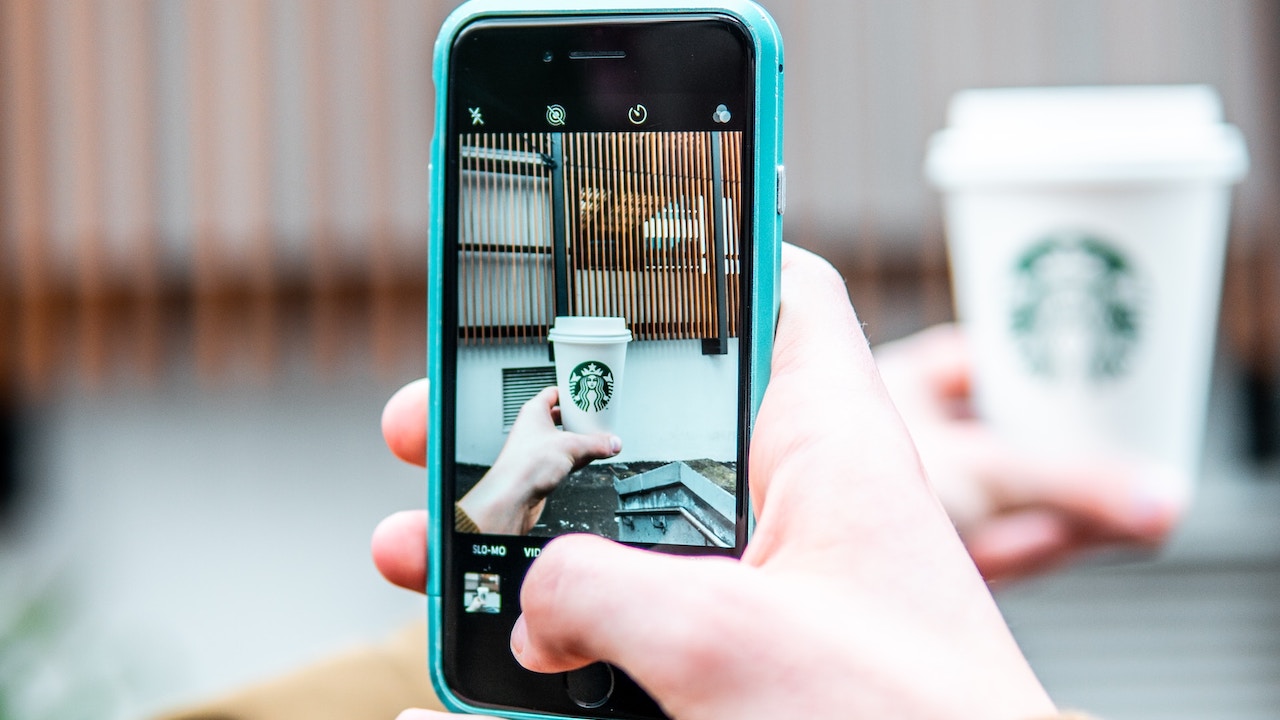NFTs
New Starbucks Loyalty Program Charts Shift to NFT Community Marketing
NFTs were 2021’s fad, right? Then why is one of the most popular brands in the world currently disrupting their own world class loyalty program? One answer may be in the ongoing shift from audience-based marketing to community-based marketing.
Audience vs. Community Marketing
The way audience-based digital marketing is done is that companies analyze data on customer demographics, such as age, gender, and location and use that data to try and target people in those broad groups. The hope is that customers similar to those they currently have will buy the same products because they share the same demographics.
They then run ads to those broad groups, including on platforms like Facebook and Instagram, and try to acquire a customer at a lower cost than they can sell items to them now and in the future (also known as trying to have a higher lifetime value (LTV) than customer acquisition cost (CAC)).
It is very easy for companies to lose money when they acquire a customer, especially when you account for the cost of goods sold. They then have to work hard to earn a repeat purchase, so that eventually that customer becomes profitable for them.
In addition, between the trend toward elimination of 3rd party data and cookies, changing definitions of demographics (ex. gender), and other regulatory factors, the audiences available to target are getting smaller and more expensive each year.
Instead, community-based marketing allows for a customer acquisition cost to be $0 or potentially even profitable via the first touchpoint. Issuing free NFTs, or even selling them, to acquire new community members flips the current paradigm on its head.
Once they have started building a community, brands still need to invest in bringing value to it, but if brands are able to use this technology to surprise and delight, the existing members will grow the community via word of mouth, bringing in more members acquired at $0.
Starbucks is the first major brand focused on this via their new loyalty program, currently available to beta users.
Starbucks is Disrupting their Own Loyalty Program
Earlier this year, Starbucks faced backlash from some of its most loyal fans when they announced changes to the point system of their current loyalty program. Although customer complaints are not a great thing, their passion highlights the brand loyalty that Starbucks has earned. Starbucks has gained so much trust that customers leave over $1.2B on the app for future purchases.
With so much passion and fandom for the current system, why in December of 2022, did Starbucks admit the first wave of customers from their waitlist for their new NFT based loyalty program, Odyssey? Perhaps, the company that understands loyalty better than anyone else sees how adding blockchain and NFTs can make loyalty more engaging for the consumer and more lucrative for the company!
Odyssey Journeys
The program is built around earning points and NFTs for completing journeys. The journeys do not mention NFTs, instead referring to them as “Stamps”:
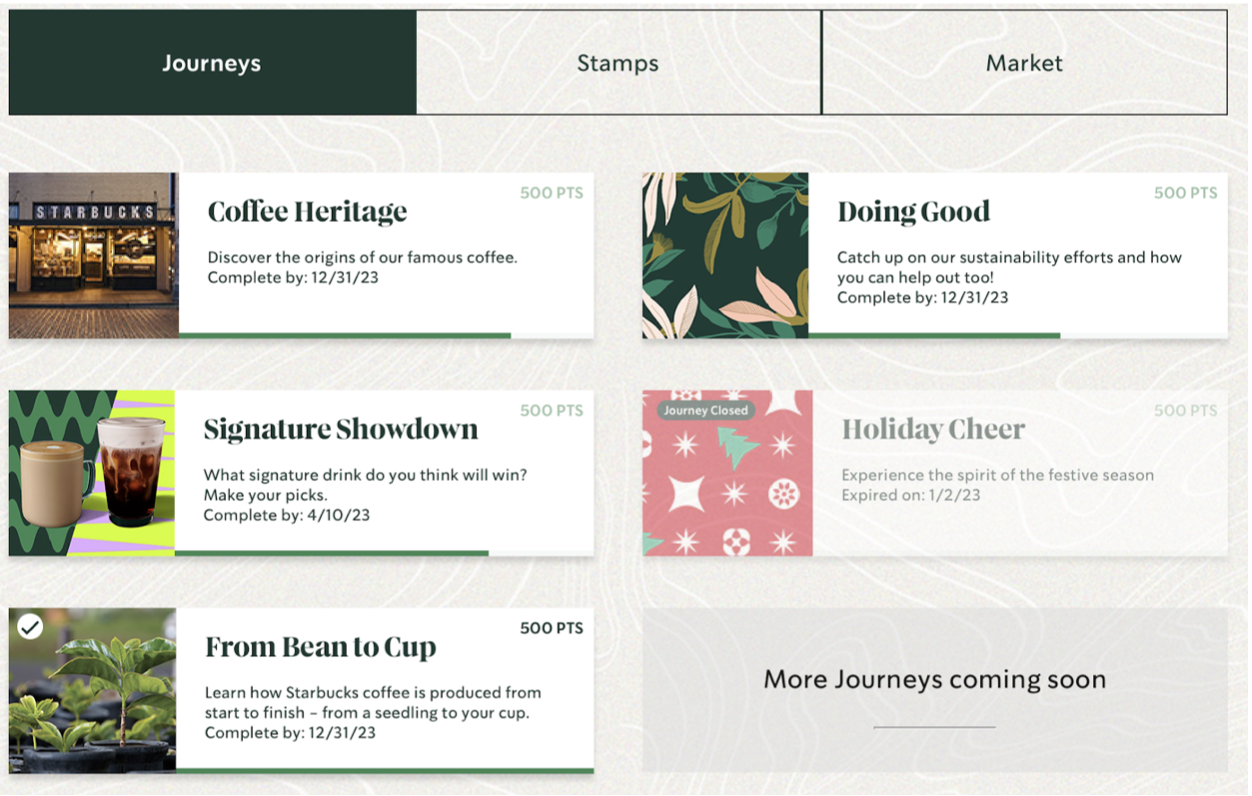
What is most interesting about the journeys is that they combine engaging with content, completing puzzles and quizzes, and also making at least one purchase:
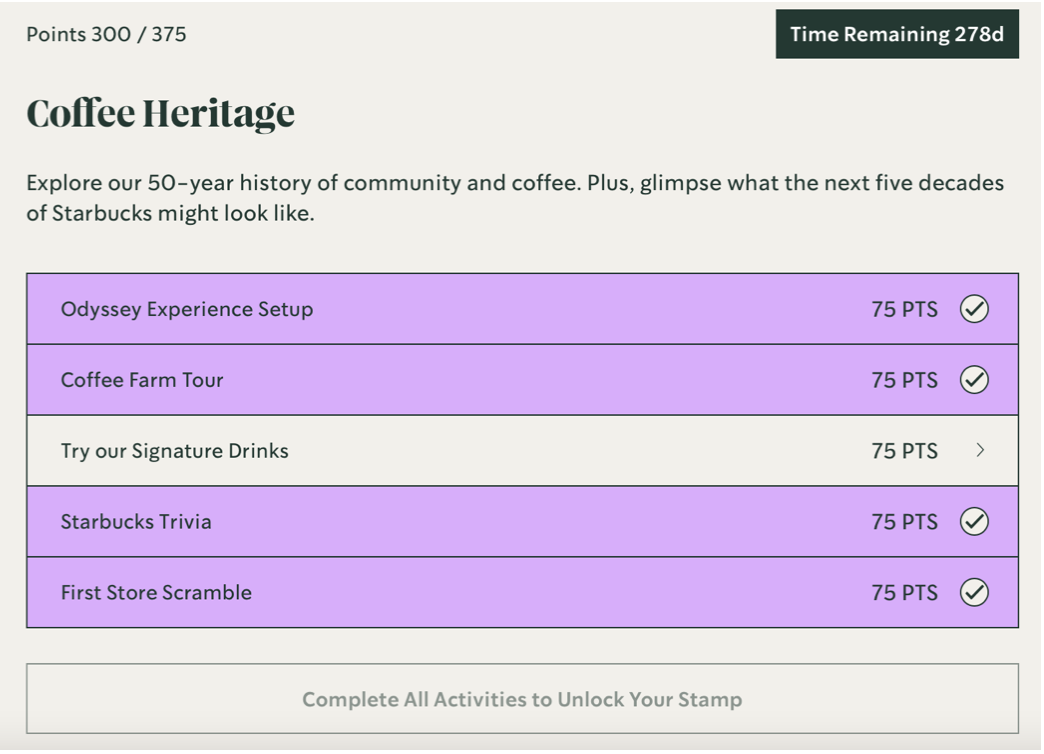
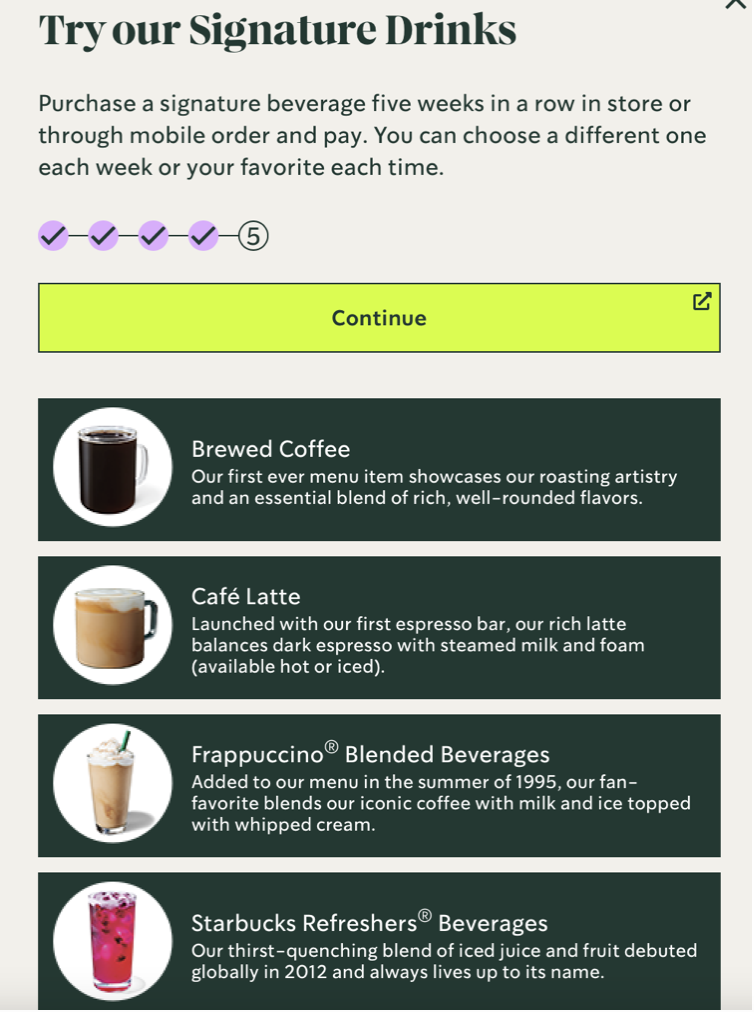
In traditional loyalty programs, the only way to earn points is to make purchases and Odyssey does not lose that aspect. However, instead of creating a system that only equates points with dollars, Odyssey allows Starbucks to create a flexible system that offers free items, as well as opportunities to give back (donate meals to charity) or earn intangible rewards (name a tree at a Starbucks farm). These benefits can be offered for a limited time and changed with the changing needs of the business over time. The initial Odyssey rewards are:
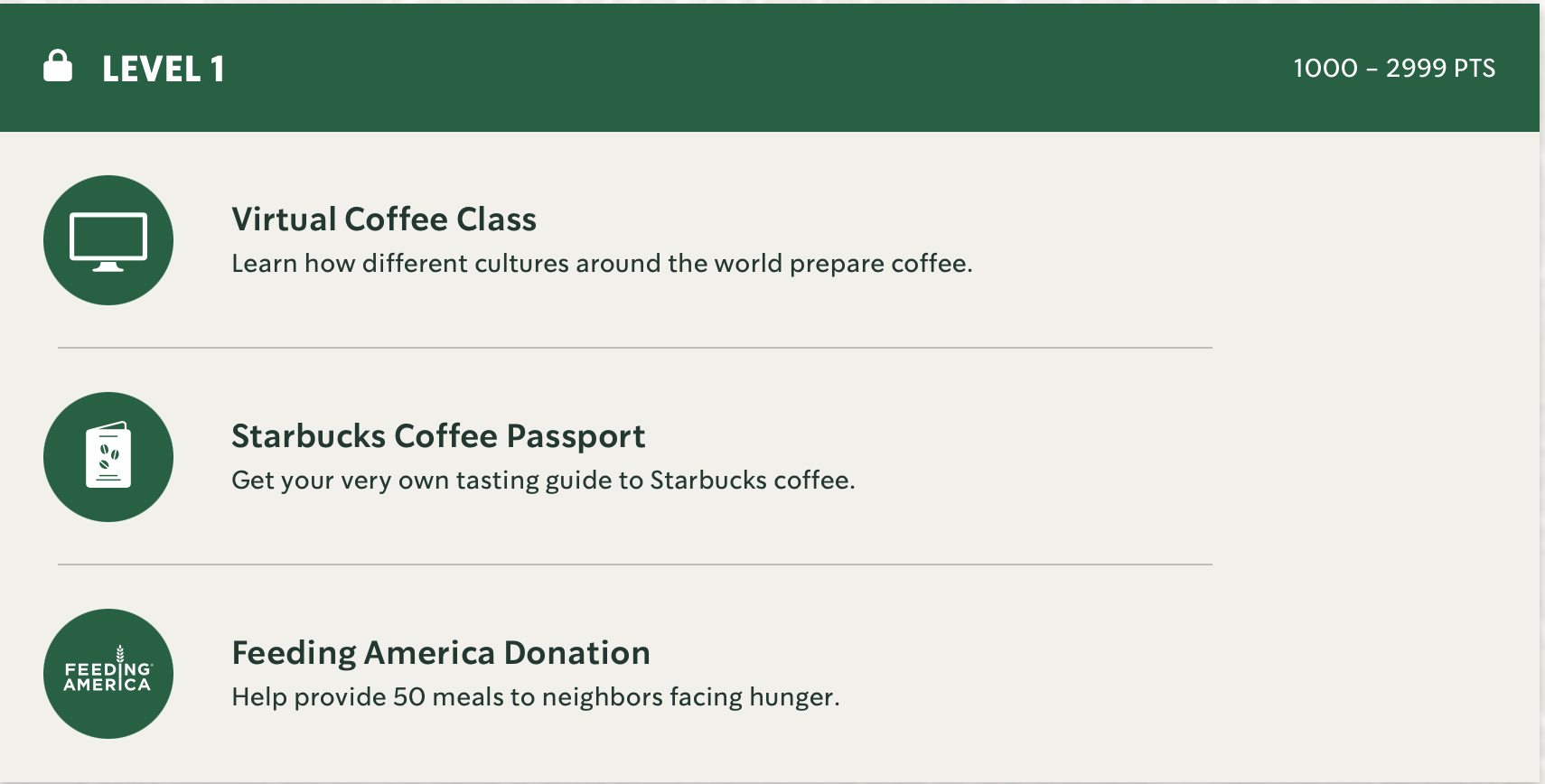
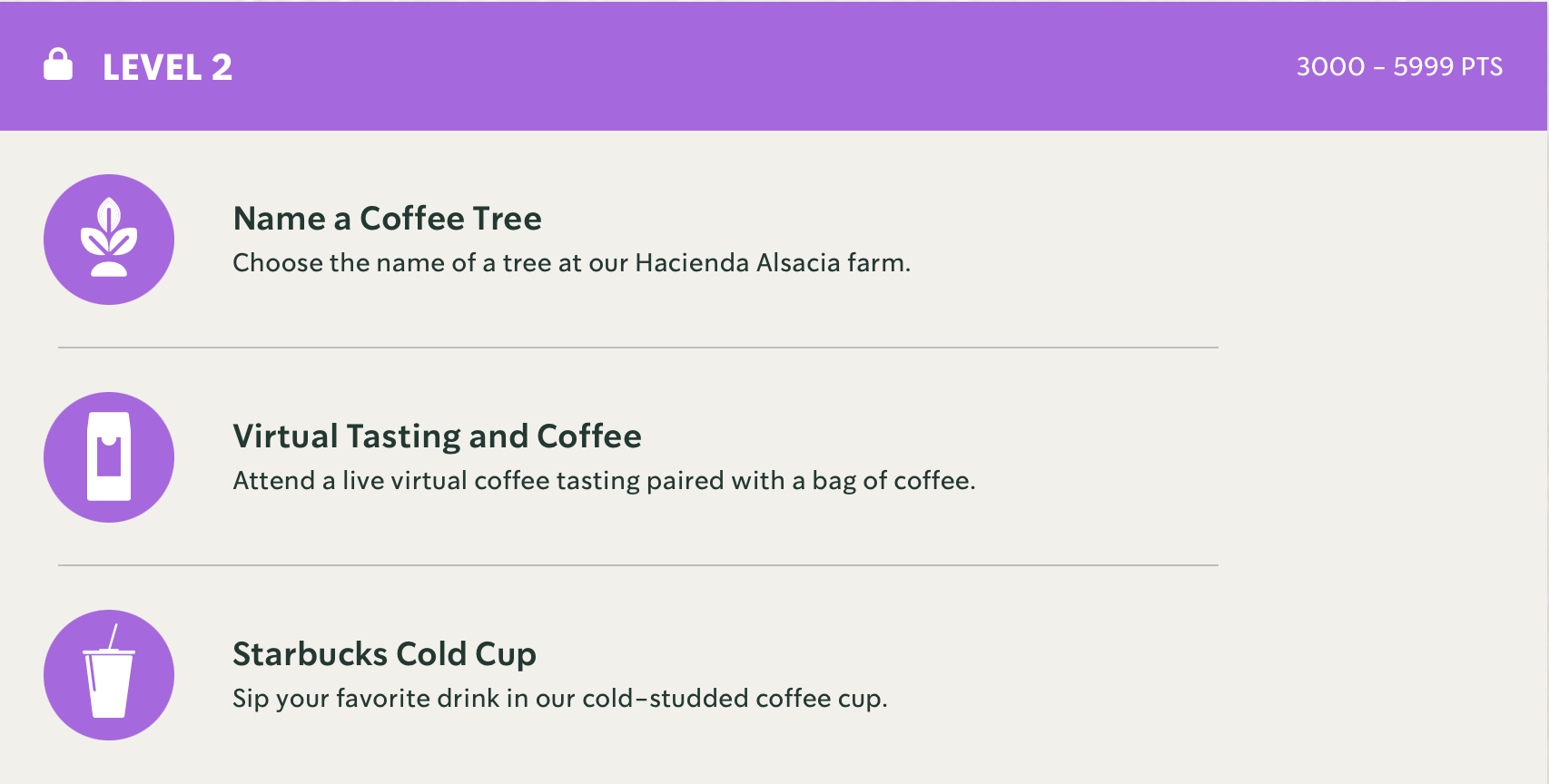
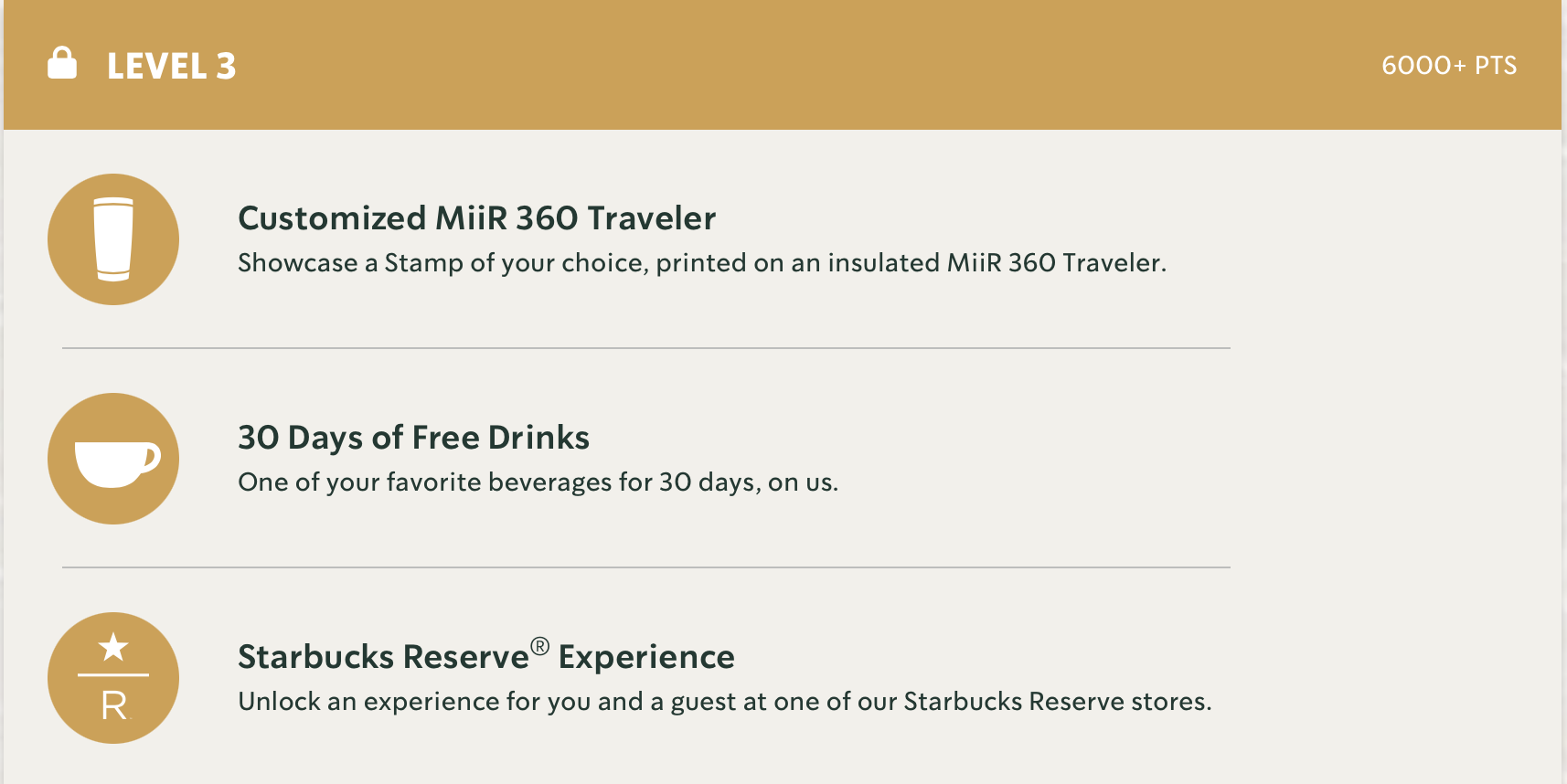
The benefits for Starbucks are:
- Flexible rewards, rather being tied to a points/dollar system forever
- Members must make a purchase to earn Stamps
- Ability to sell stamps as a product
- Starbucks has also sold over 6,000 Stamps as art pieces, generating hundreds of thousands in revenue
- Ability to cross-partner with other loyalty program
- A guest on Coindesk’s Gen C podcast recently posited that an almond milk coupon could be automatically applied at Whole Foods based on a member’s Starbucks buying history
The benefits for the members are:
- Expanded rewards
- Ability to sell earned Stamps for dollars in the marketplace
- Earn some points without making a purchase
In the same way that older generations might collect ticket stubs or wear free merchandise they received from a favorite brand, younger generations are interested in buying and collecting digital items. Blockchain technology ties together holders of digital items via verified ownership, and allows brands to reward and re-market to their community directly.


